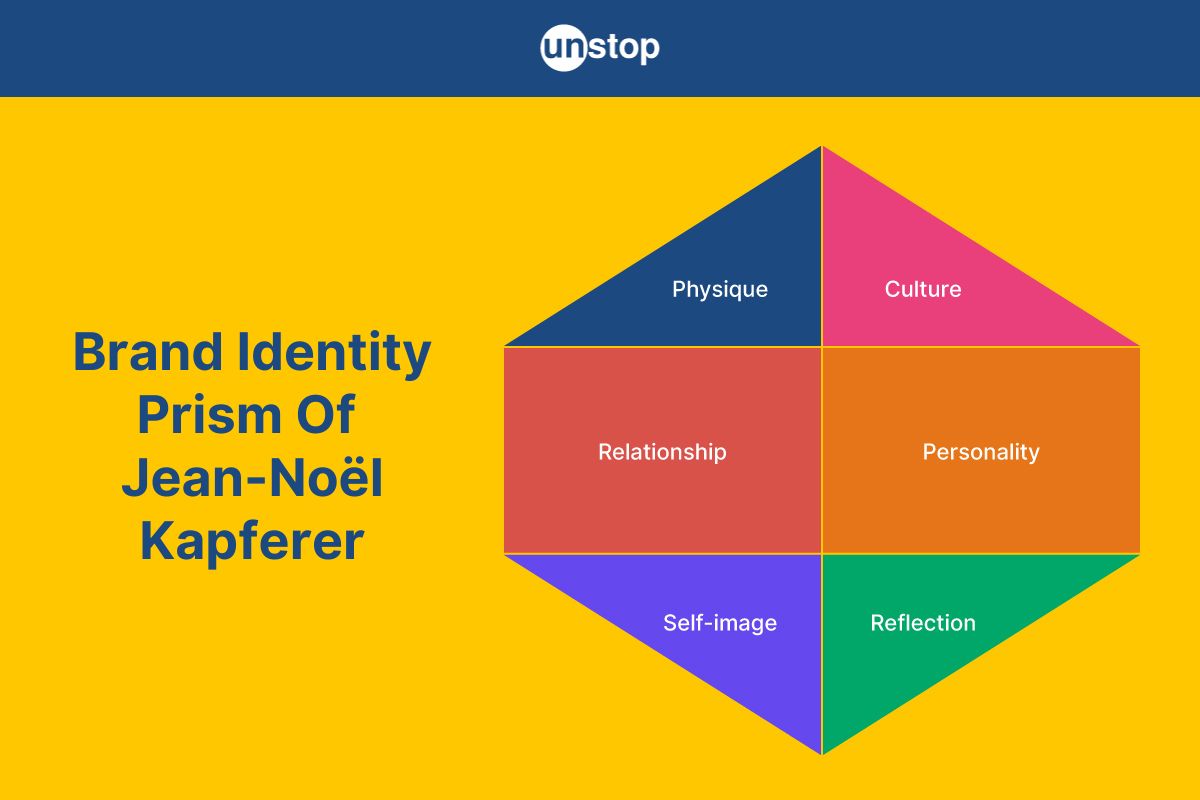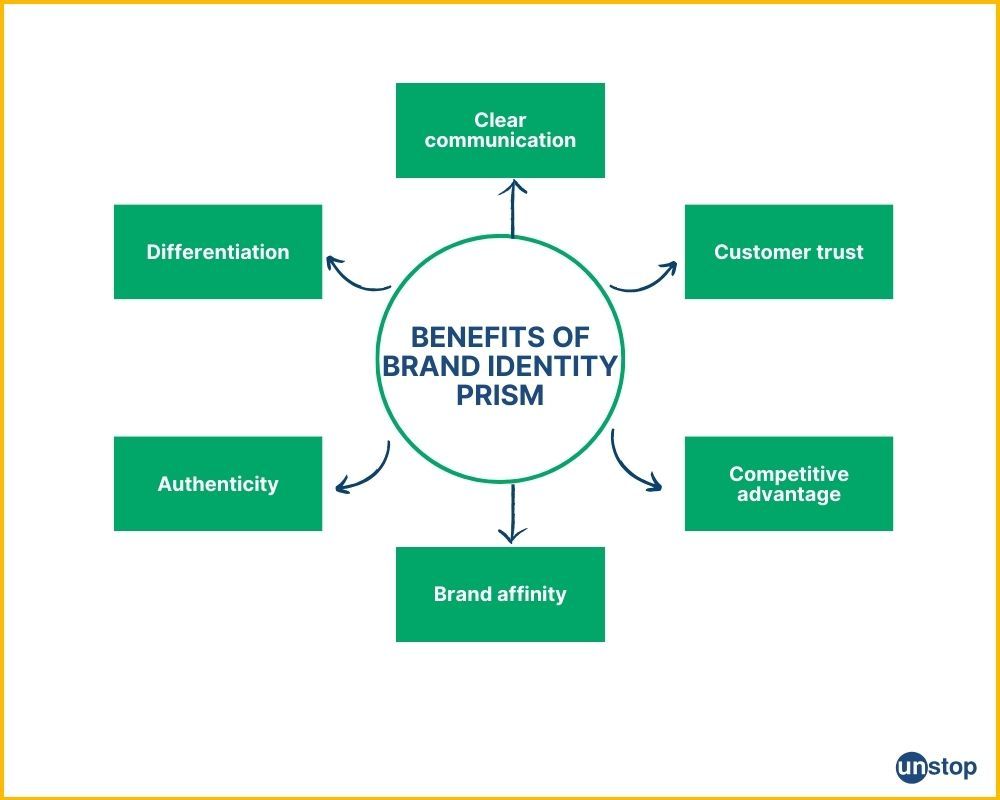- What is a Brand & Why is it Important?
- Elements of a Brand: Mission, Vision, and Values
- Types of Brands and their Significance
- Branding Strategies: Private, Multiproduct, and Mixed
- Brand Image and Its Impact on Perception
- Building a Strong Brand
- Frequently Asked Questions
- Understanding Brand Equity: Definition and Elements
- Importance of Brand Equity
- Evolution Of Brand Equity In The Digital Age
- Brand Equity in the Global Marketplace
- Measuring Brand Equity: Metrics & Methods
- Managing Brand Equity: Salient Elements
- Building & Managing Brand Equity: Best Practices
- The Future of Brand Equity
- Conclusion
- Frequently Asked Questions
- What is Brand Management?
- Importance of Brand Management
- Benefits of Effective Brand Management
- Principles of Brand Management
- Strategies for Successful Brand Management
- Brand Management vs. Marketing
- Conclusion: The Power of Brand Management
- Frequently Asked Questions
- Importance of Brand Image in Marketing
- Key Elements of a Successful Brand Image
- Brand Image vs. Brand Identity: Key Differences
- Measuring and Monitoring Brand Image
- Strategies for Maintaining and Enhancing Brand Image
- The Power of a Positive Brand Image
- FAQs
- What is Brand Awareness and its Importance?
- Benefits of Brand Awareness
- Brand Awareness Strategy: Some Tried & Tested Methods
- Some Creative Ways to Boost Brand Awareness
- Significance of Brand Awareness
- Conclusion
- Frequently Asked Questions
- Porter's 5 Forces Model: What Is It?
- Porter's 5 Forces Model: How To Use It?
- Common Barriers to Entry
- Evaluating Suppliers' Negotiating Power
- Understanding the Bargaining Power of Buyers
- Analyzing Threat of Substitute Products or Services
- Rivalry amongst Competitors (Old & New)
- Drawbacks of the Five Forces Model
- Conclusion
- Frequently Asked Questions
- How Well Do You Know Porter’s 5 Forces? Take A Quiz!
- What is Buying Motive?
- Types Of Buying Motives
- Importance Of Buying Motives
- Six Universal Buying Motives
- Identifying Buyer's Motives
- Utilizing Buying Motives In Sales
- Challenges In Interpreting Buying Motives
- Frequently Asked Questions (FAQs)
- 💸 Think You Know Buying Motives? Take A Quiz!
- Understanding the Elements and Importance of Brand Equity
- What are brand equity models?
- Comparing Keller's and Aaker's brand equity models
- Real-world examples of brand equity in action
- Strategies for building strong brand equity
- Key takeaways on brand equity models
- FAQs
- Mastered Brand Equity Models? Prove It!
- What Is Brand Positioning?
- The Importance of Brand Positioning for Businesses
- Creating A Brand Positioning Strategy: Step-By-Step Process
- Measuring the Success of Your Brand's Positioning
- Examples of Strong Brand Positioning in the Market
- Types of Brand Positioning Strategies
- Social Media Engagement: A Key Positioning Strategy
- What Makes a Good Brand Positioning Strategy?
- Conclusion
- Frequently Asked Questions
- Quick Quiz to Test Your Knowledge of Brand Positioning!
- Brand Personality: Definition & Importance
- How to Define Your Brand Personality?
- Choosing Your Brand Personality Attributes
- Dimensions of Brand Personality Framework: The Aaker Model
- Incorporating Core Values Into Your Brand Personality
- Examples of Brand Personalities in Action
- Conclusion
- Frequently Asked Questions
- Brand Personality Quiz– Let's Go!
- What is Brand Identity?
- What are the Key Components of Brand Identity?
- Importance & Benefits Of Brand Identity
- Importance of Unique Visual Elements in Brand Identity
- Communication Style and Tone of Voice in Brand Identity
- Steps on How to Create a Brand Identity
- Brand Identity Example- Coca-Cola
- Examples of Strong Brand Identities in Different Industries
- Consistency in Online and Offline Branding
- Conclusion
- Frequently Asked Questions (FAQs)
- Think You Know Brand Identity? Take A Quiz!
- Brand Identity Prism: Understanding The Concept
- Role Of Culture In Brand Identity Prism
- Brand Identity Prism: Visualizing The Sender & Receiver
- Benefits Of Brand Identity Prism
- Examples Of Brand Identity Prism In Action
- Brand Identity Prism: Key Takeaways
- Frequently Asked Questions
- Take This Brand Identity Prism Quiz!
- What is Market Segmentation?
- Importance of Market Segmentation
- The Market Segmentation Process
- Types of Market Segmentation
- Common Challenges in Implementing Market Segmentation
- Overcoming Challenges in Market Segmentation
- Conclusion: Understanding The Impact
- Frequently Asked Questions (FAQs)
- Test Your Market Segmentation Knowledge– Take This Quiz!
- What is Brand Loyalty? Meaning & Significance
- Characteristics of Brand Loyalty
- Measuring and Tracking Brand Loyalty
- Importance of Brand Loyalty for Companies
- Brand Loyalty Examples and Types
- Strategies for Building Brand Loyalty
- Differentiating Brand Loyalty from Customer Loyalty
- Conclusion: The Power and Importance of Brand Loyalty
- Frequently Asked Questions
- Think You Know Brand Loyalty? Take A Quiz!
- Brand Extension Meaning
- Brand Extension Types
- Understanding Brand Line Extension vs. Brand Extension
- The Impact and Potential of Brand Extension
- Successful and Unsuccessful Brand Extensions Examples
- Summing Up
- Frequently Asked Questions
- Quiz– Test Your Brand Extension!
- Step-by-step guide on how to build a brand from scratch
- Benefits of a Strong Brand
- Examining Successful Brand-Building Examples
- Summing up
- Frequently Asked Questions
- Know How to Build a Brand? Prove it With This Quiz!
- What is Marketing Mix?
- Understanding the 4 Ps of Marketing
- The Seven Ps of Marketing
- Implementing the Marketing Mix in Business
- Amul: Example of Successful Marketing Mix Implementation
- Exploring Alternative Marketing Mix Models
- Conclusion
- Frequently Asked Questions (FAQs)
- Mastered the Marketing Mix! Test Your Knowledge Now
- Defining Brand Value and its Importance
- Measuring Brand Value
- Factors that Make a Brand Valuable to Customers
- Examples of Brand Value from Real World
- Brand Value Versus Brand Equity
- The Impact of Brand Value on Business Marketing Strategies
- Conclusion: The Significance of Brand Value
- Frequently Asked Questions
- How Much Do You Know About Brand Value? Take This Quiz!
- Definition Of Co-Branding
- Different Types Of Co-Branding
- Benefits & Advantages Of Co-Branding
- Strategies For Successful Co-Branding Partnerships
- Notable Successful Co-Branding Examples
- Factors Influencing Co-Branding Success
- Frequently Asked Questions (FAQs)
- Co-Branding Quiz: Test Your Expertise!
- What is a Target Market?
- Importance of Target Market: Why Do We Need It?
- Types of Target Market
- The Target Marketing Process
- Primary Research for Target Markets
- Leveraging Target Market Segmentation for Sales
- Conclusion
- Frequently Asked Questions (FAQs)
- 🎯 Do You Know Your Target Market? Take the Quiz!
- Importance of Understanding Consumer Decisions
- Traditional vs Contemporary Consumer Behaviour Model
- Traditional Models of Consumer Behaviour
- Learning Model of Consumer Behaviour
- Psychoanalytical Model of Consumer Behaviour
- Sociological Model of Consumer Behaviour
- Economic Model of Consumer Behaviour
- Contemporary Models of Consumer Behaviour
- EKB Model of Consumer Behaviour
- Black Box Model of Consumer Behaviour (Stimulus-Response Consumer Behaviour Model)
- Howard Sheth Model of Consumer Behaviour
- Hawkins-Stern Model of Consumer Behavior
- Webster and Wind Model
- Nicosia Model of Consumer Behaviour
- How to Select a Consumer Behaviour Model?
- Final Remarks
- Frequently Asked Questions
- 🛍️ Consumer Behavior Models Quiz: Test Your Knowledge!
- What is a Consumer?: Definition & Role
- The Evolution of the Term "Consumer"
- Consumer Behavior
- Different Types of Consumers
- Consumers' Motivation for Buying
- Relationship Between Businesses and Consumers
- Consumer Rights in India
- Current Challenges for Consumers
- The Future of Consumers in a Digital Age
- Final Remarks
- Frequently Asked Questions (FAQs)
- 🛍️ Consumer or Customer? Test Your Knowledge!
- What is a Market Structure?
- Types of Market Structures
- How Markets Work
- Significance of Different Types of Market
- Summing Up
- Frequently Asked Questions
- 🏪 Market Structures 101: Take the Quiz!
- Understanding the Concept of Corporate Branding
- Importance and Advantages of Corporate Branding
- Researching Competitor Brands
- Implementing Effective Corporate Branding Strategies
- Successful Corporate Branding Examples: Alphabet, Walmart & SAP
- Impact and Success of Corporate Branding
- Conclusion
- Frequently Asked Questions
- 🏢 Corporate Branding Quiz: Test Your Knowledge!
- Perception Management: Meaning & Importance
- Process Of Perception Management
- Influencing & Shaping Perceptions
- Strategies For Perception Management
- Technology In Perception Management
- Branding & Control In Perception Management
- Customer Feedback For Perception Improvement
- Frequently Asked Questions (FAQs)
- 🧠 Perception Management Quiz: How Well Do You Know It?
- Definition & Importance Of Target Marketing
- Advantages & Disadvantages Of Target Marketing Strategies
- Examples Of Target Marketing Strategies
- Creating An Effective Target Market Strategy
- Segmentation: Key To Targeted Marketing
- Utilizing Social Media For Targeted Marketing
- Frequently Asked Questions ( FAQs)
- 🎯 Target Marketing Strategies Quiz: Test Your Knowledge!
- Definition and Significance of Brand Association
- Brand Association Types
- Successful Brand Association Examples
- Strategies for Building Strong Brand Associations
- Overcoming Negative Brand Associations
- Conclusion: Harnessing the Power of Brand Association
- Frequently Asked Questions
- 🔗 Brand Association Quiz: Check Your Brand Knowledge!
- What is Product Positioning?
- Importance Of Product Positioning in Marketing
- Difference between Product Positioning and Brand Positioning
- Types Of Product Positioning
- Main Components Of Product Positioning
- Successful Product Positioning Strategies
- Understanding the Product Positioning Process
- Examples Of Effective Product Positioning
- Conclusion
- Frequently Asked Questions (FAQs)
- 🔥 Product Positioning Quiz: Test Your Marketing Smarts!
- How do we define niche market?
- Strategies To Find Your Niche Market
- 7 Examples Of Niche Markets
- Benefits Of Targeting A Niche Market
- Testing Your Product Or Service For Niche Market
- Conclusion
- Niche Market: Frequently Asked Questions (FAQs)
- 🎯 Niche Market Quiz: Test Your Knowledge!
- Importance Of STP In Marketing
- Understanding STP in Marketing Step-by-Step
- Process Of Implementing STP In Marketing
- Examples Of Successful STP Strategies
- Conducting An STP Marketing Analysis
- Choosing Your Marketing Mix
- Strategies For Targeting the Right Audience
- Conclusion
- Frequently Asked Questions (FAQs)
- 🔍 STP in Marketing Quiz: Test Your Knowledge!
- Sales and Marketing: Understanding the Core Concepts
- Key Differences Between Sales and Marketing
- Types of Marketing
- Types of Sales
- Power of Synergy: Sales and Marketing Alignment (Smarketing)
- Frequently Asked Questions (FAQs)
- Definition Of Customer Satisfaction
- Importance Of Customer Satisfaction
- Strategies For Effective Customer Satisfaction
- Measuring Customer Satisfaction
- Customer Satisfaction in Marketing & Sales
- Frequently Asked Questions (FAQs)
- 🎯 Customer Satisfaction Quiz: Are You an Expert?
- Customer Delight Meaning
- Benefits of Customer Delight
- Customer Satisfaction Vs Customer Delight
- Strategies With Customer Delight Examples
- How to Measuring the Impact Of Customer Delight?
- Customer Delight Examples - 3 instances by big brands that won hearts
- Common Mistakes In Customer Delight
- Conclusion
- Frequently Asked Questions (FAQs)
- 🌟 Customer Delight Quiz: Can You Ace It?
- What is a Marketing Plan?
- Types Of Marketing Plan
- What are the Key Components of a Marketing Plan?
- Steps for Effective Marketing Planning
- Crafting Your SEO Content Strategy
- Budgeting & Resource Allocation
- Identifying & Analyzing Competition
- Measuring Success with KPIs
- Importance of Flexibility in Marketing Planning
- Challenges of Marketing Plan
- Marketing Plan vs Business Plan
- Conclusion
- Frequently Asked Questions (FAQs)
- 📊 Marketing Planning Quiz: Test Your Knowledge!
- What is Marketing Control?
- Types of Marketing Control (with Examples)
- Annual Plan Marketing Control
- Profitability Marketing Control
- Efficiency Marketing Control
- Strategic Marketing Control
- Process of Marketing Control
- Techniques Used in Marketing Control
- Frequently Asked Questions
Brand Identity Prism: A Guide To Build A Brand That Stands Out

Understanding brand identity is vital for businesses looking to establish a strong and distinct presence in the market. One effective tool that can guide brands in shaping their identity is the brand identity prism, a concept first introduced by Jean-Noël Kapferer in 1986. It is sometimes called the Kapferer brand identity prism, which is a concept for describing a brand’s identity through its characteristics.
Having a clear understanding of the brand identity prism helps businesses differentiate themselves from competitors and enables them to effectively communicate their values and connect with customers on an emotional level.
Brand Identity Prism: Understanding The Concept
The role of a brand identity prism in shaping a brand's image is immense in the sense that it helps businesses establish a unique and recognizable identity that resonates with their target audience.
Kapferer's Brand Identity Prism: Exploring The Six Elements
Let's delve into each element of Kapferer's brand identity prism and understand how they work together to form a holistic brand identity.
-
Physique: This element refers to the physical attributes and appearance of a brand. It encompasses everything from the logo, packaging materials, font choice, colors, and even the overall design. The physique is what gives a brand its visual identity and helps it stand out from competitors.
-
Personality: Just like individuals have distinct personalities, brands can also have their own unique personality traits. These traits define how the brand communicates with its audience and shape its tone of voice. A brand's personality can be friendly, professional, innovative, or any other attribute that resonates with its target market.
-
Culture: The cultural aspect of a brand reflects its values, beliefs, and mission. It showcases what the brand stands for beyond just selling products or services. By aligning with specific causes or promoting certain ideologies, brands can establish an emotional connection with consumers who share similar values.
-
Relationship: Building strong relationships with customers is crucial for long-term success. This element focuses on how brands interact with their audience and foster loyalty through customer service, engagement on social media platforms, personalized experiences, and other initiatives aimed at building trust.
-
Reflection: Reflection refers to how consumers perceive themselves when they use or associate themselves with a particular brand. Brands often strive to create an image that consumers aspire to be associated with or view as reflective of their own identities.
-
Self-Image: Self-image relates to how consumers see themselves in relation to others when using a specific brand or product. It taps into the emotional aspect of consumer behavior, where individuals seek validation or a sense of belonging by associating themselves with certain brands.
Role Of Culture In Brand Identity Prism
Culture plays a significant role in shaping a brand's personality. Here are some of the important cultural factors involved in brand identity prism:
-
Language: Language is an integral part of culture, and using the appropriate language in branding can help create resonance with the target audience. For example, Coca-Cola successfully incorporated local languages into its marketing campaigns worldwide, allowing consumers to feel a sense of familiarity and belonging.
-
Symbols and imagery: Symbols and imagery are powerful tools for conveying cultural messages. Brands that effectively utilize culturally relevant symbols can evoke emotions and build stronger connections with their audience. Nike's iconic swoosh logo has become synonymous with athleticism and determination, transcending borders and cultures.
-
Values and beliefs: Cultural values play a crucial role in shaping brand perception. By aligning their values with those of their target market, brands can establish trust and loyalty among consumers. Patagonia's commitment to environmental sustainability resonates deeply with environmentally conscious consumers who prioritize ethical practices.
Brand Identity Prism: Visualizing The Sender & Receiver
Understanding the role of both the sender (brand) and receiver (consumers) in shaping brand identity is crucial in building a successful brand.
In the realm of branding, the sender refers to the brand itself, while the receiver represents consumers or target audience. Communication acts as a bridge between these two parties, allowing them to exchange messages and establish connections.
When a brand communicates its message to consumers, it aims to create an image or idea that resonates with its target audience. This messaging reflects the values, personality, and unique selling points of the brand. On the other hand, consumers receive these messages and interpret them based on their own perceptions and experiences.
Benefits Of Brand Identity Prism

Utilizing the brand identity prism model offers several advantages for businesses. Let's explore how this framework can enhance clarity and consistency in branding efforts, as well as improve customer loyalty and differentiation from competitors.
- Clear communication: The brand identity prism provides a structured framework for businesses to articulate their unique selling proposition (USP) clearly. It helps them convey their core message consistently across various marketing channels.
-
Differentiation: By defining their brand's unique attributes, businesses can differentiate themselves from competitors. This distinctiveness enables customers to recognize and remember the brand more easily.
-
Authenticity: A well-developed brand identity fosters authenticity by aligning the company's values with its actions. When customers perceive a genuine commitment to these values, they are more likely to trust and engage with the brand.
-
Brand affinity: A clear and consistent brand identity resonates with customers who share similar values or aspirations. This emotional connection cultivates loyalty, leading to repeat purchases and advocacy.
-
Competitive advantage: In highly competitive industries, a well-defined brand identity can be a key differentiator. It helps businesses carve out a unique position in the market and attract customers who align with their values.
-
Increased customer trust: When customers perceive consistency in a brand's messaging and actions, it builds trust. Trust is essential for establishing long-term relationships with customers and gaining their loyalty.
Examples Of Brand Identity Prism In Action
Renowned brands across various industries have successfully implemented the brand identity prism model, effectively leveraging their unique identities to connect with consumers. Let's take a closer look at some real-world examples that demonstrate the power of this approach:
Land Rover: A Sense of Adventure
Land Rover is a prime example of a brand that has successfully established a strong brand image through its unique identity. The company positions itself as an adventurous and rugged brand, catering to individuals who seek thrilling experiences both on and off-road.

Image credit: Unsplash
By consistently focusing on this particular brand image, Land Rover has managed to create a loyal customer base that associates the brand with exploration and excitement.
Starbucks: Community and Connection
Starbucks has built its brand around the idea of creating a community space where people can come together over coffee. The company focuses on providing not just a product but also an experience centered around connection and social interaction.

Image credit: Unsplash
Through initiatives like free Wi-Fi, comfortable seating areas, and inviting store layouts, Starbucks fosters an environment where customers feel welcome and encouraged to stay longer. This emphasis on community-building has helped Starbucks establish itself as more than just another coffee chain.
Nike: Empowerment Through Athletics
Nike is synonymous with athletic performance and empowerment. The company's marketing campaigns often feature professional athletes pushing boundaries and inspiring others to do the same.

Image credit: Unsplash
By aligning their brand identity with the values of determination, perseverance, and self-improvement, Nike has successfully connected with consumers on an emotional level.
Brand Identity Prism: Key Takeaways
In conclusion, understanding the concept of brand identity prism is indispensable for businesses looking to establish a strong and cohesive brand image. By exploring the six elements of Kapferer's brand identity prism, companies can gain valuable insights into how their brand is perceived by consumers and align their messaging accordingly.
Recognizing the role of culture in brand identity prism allows organizations to adapt their branding strategies to different markets and target audiences. Visualizing the sender and receiver in a brand identity prism helps businesses understand the dynamics of communication between their brand and consumers, enabling them to effectively convey their desired message.
Frequently Asked Questions
1. What are some common challenges when implementing a brand identity prism?
Implementing a brand identity prism can pose several challenges for businesses. One common challenge is ensuring consistency across all touchpoints and communication channels. It requires careful coordination between various departments within an organization to maintain a unified voice and visual representation of the brand. Another challenge is adapting the brand's messaging and imagery to different cultural contexts without losing its core essence.
2. How does culture influence the elements of a brand identity prism?
Culture plays a significant role in shaping consumer perceptions and preferences. When considering the elements of a brand identity prism such as personality or relationship, cultural factors must be taken into account. Different cultures may value certain traits or symbols differently, requiring brands to tailor their messaging accordingly. Understanding cultural nuances can help businesses avoid misunderstandings or misinterpretations that may negatively impact their brand image.
3. Can a brand identity prism be used for rebranding purposes?
Yes, a brand identity prism can be a valuable tool for organizations undergoing a rebranding process. By reassessing and realigning each element of the prism, companies can redefine their brand's positioning and better connect with their target audience. It allows businesses to evaluate whether their current brand identity accurately reflects their desired image and make necessary adjustments to achieve their rebranding objectives.
4. How can the brand identity prism contribute to customer loyalty?
The brand identity prism helps create a consistent and authentic brand image that resonates with customers. By clearly defining the personality, culture, and values of the brand, it establishes an emotional connection with consumers. When customers feel aligned with a brand's values and perceive it as trustworthy, they are more likely to develop loyalty towards that brand. Consistent delivery of the promised experience further strengthens this bond.
5. Are there any risks associated with using the brand identity prism?
While the use of a brand identity prism can bring numerous benefits, there are potential risks involved if not implemented carefully. One risk is creating an inconsistent or confusing brand image if different elements of the prism do not align harmoniously. Another risk is misinterpreting cultural cues or failing to adapt appropriately, which could lead to negative associations with the brand. It is crucial for businesses to conduct thorough research and seek expert guidance when utilizing the concept of a brand identity prism.
Take This Brand Identity Prism Quiz!
Suggested reads:
- Visual Merchandising: Definition, Types, And Examples
- What Is Retail & How Does It Work? Demystifying The Vital Component Of Economy
- Brand Identity: A Definitive Guide For Understanding This Marketing Concept
- Brand Awareness A To Z: Comprehensive Guide For New Businesses
- Retail Management Decoded: Find Its Meaning, Importance, Benefits & Types
Alekhya Chakrabarty is a father, a doodler, a trivia buff, a sports fanatic and a lifelong student of marketing. Alekhya is the VP of Marketing & Growth at Unstop, the engagement and hiring platform which connects students and graduates with opportunities. He has over a decade and a half of experience in driving revenue and building brands with the likes of Nestle, HUL and ITC. He is an alumnus of IMT Ghaziabad and in his last stint he was leading the marketing function at Sunstone, a higher education startup. Alekhya has been recognised as a ‘Top Voice’ on LinkedIn for Digital Marketing & Brand Management. He runs a marketing podcast titled East India Marketing Company to drive conversations around growth, content, culture and commerce.
Login to continue reading
And access exclusive content, personalized recommendations, and career-boosting opportunities.
Subscribe
to our newsletter
















Comments
Add comment